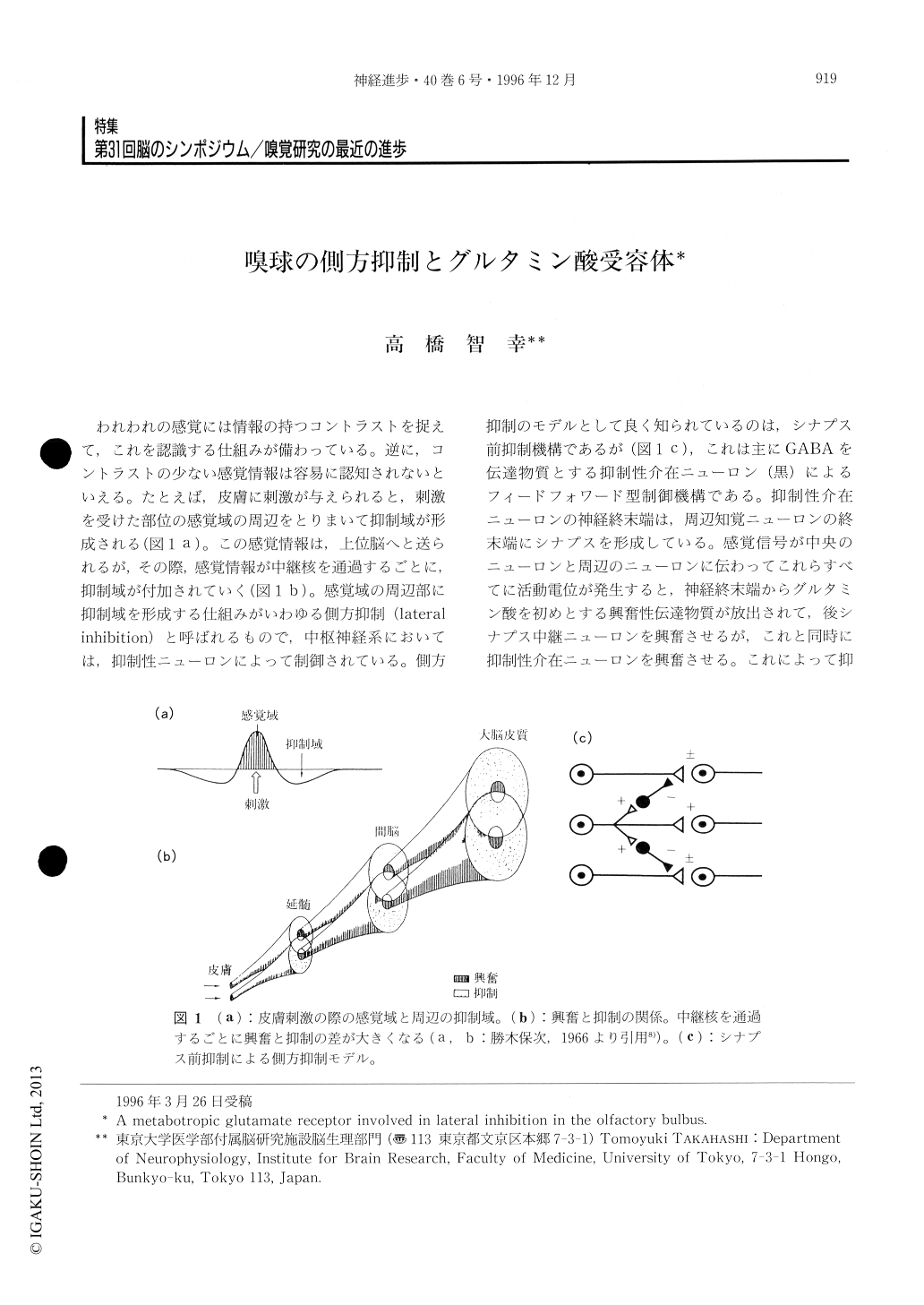Japanese
English
- 有料閲覧
- Abstract 文献概要
- 1ページ目 Look Inside
われわれの感覚には情報の持つコントラストを捉えて,これを認識する仕組みが備わっている。逆に,コントラストの少ない感覚情報は容易に認知されないといえる。たとえば,皮膚に刺激が与えられると,刺激を受けた部位の感覚域の周辺をとりまいて抑制域が形成される(図1a)。この感覚情報は,上位脳へと送られるが,その際,感覚情報が中継核を通過するごとに,抑制域が付加されていく(図1b)。感覚域の周辺部に抑制域を形成する仕組みがいわゆる側方抑制(lateralinhibition)と呼ばれるもので,中枢神経系においては,抑制性ニューロンによって制御されている。側方抑制のモデルとして良く知られているのは,シナプス前抑制機構であるが(図1c),これは主にGABAを伝達物質とする抑制性介在ニューロン(黒)によるフィードフォワード型制御機構である。抑制性介在ニューロンの神経終末端は,周辺知覚ニューロンの終末端にシナプスを形成している。
Lateral inhibition is an essential mechanism for enhancing a contrast in sensory signals. In the olfactory bulbus, mitral and granule cells form dendrodendritic synapses with each other. At these synapses, a mitral cell releases L-glutamate, thereby exciting granule cells. The excited granule cells release GABA, thus generating feedback inhibition onto mitral cells. We have recently demonstrated that the mGluR2 subtype of metabotropic glutamate receptor is highly localized at these synapses, in particular at the postsynaptic granule cell membrane in the accessory olfactory bulbus.

Copyright © 1996, Igaku-Shoin Ltd. All rights reserved.


